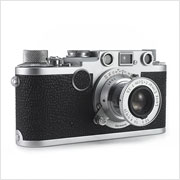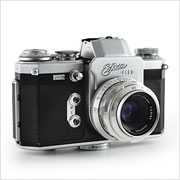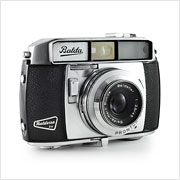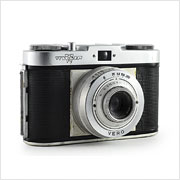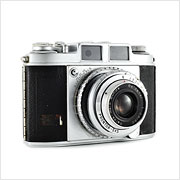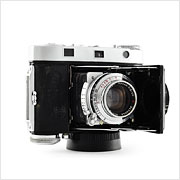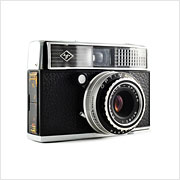Leica IIf
The Leica IIf is a high-end 35mm rangefinder debuted in 1951 by Ernst Leitz GmbH and produced in the German city of Wetzlar. This model is essentially identical to the Leica IIIf but without the capability of shutter speeds slower than 1/25 of a second. However, even the IIf model itself has several variants. This particular example has red flash sync numbers around the base of the shutter speed dial as opposed to black and a fastest shutter speed of 1/1000 as opposed to 1/500.

